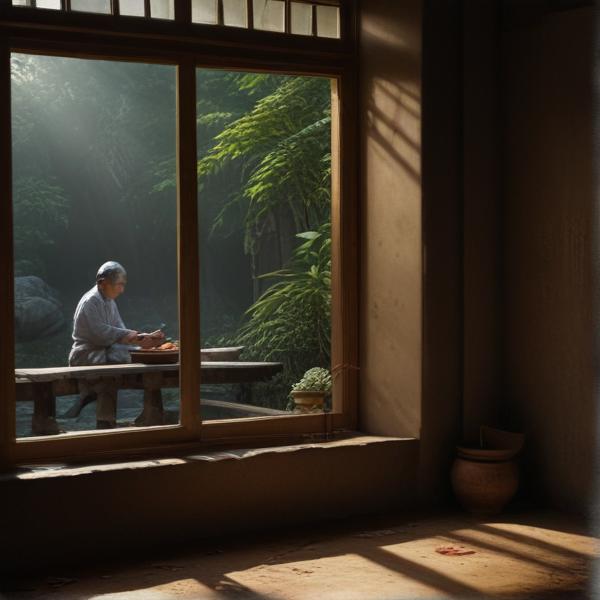基本信息 (Basic Information)
含义与用法 (Meanings & Usage)
中文核心释义 (Core Chinese Meaning): 损坏,变质,不好,恶劣
英文核心释义 (Core English Meaning): broken, bad, spoiled, evil
象形意义 / 为何这么写 (Pictographic Meaning / Writing Rationale)
文言文释义 (Classical Chinese Meaning)
与现代意义相近,主要指毁坏、损坏,有时指灭亡或腐败。Similar to modern meaning, mainly referring to destruction or damage, sometimes implying decay or ruin.
深入学习 (In-depth Study)
字源故事 (Origin Story)
字形演变 (Character Evolution)
常用词语和例句 (Common Words & Examples)
坏人 (bad person; villain)
他不是坏人,只是做错了一些事。
Eng: He is not a bad person; he just made some mistakes.
坏掉 (to break down; to be ruined)
我的手机坏掉了,不能用了。
Eng: My phone broke down and can't be used anymore.
弄坏 (to break; to damage)
你不小心弄坏了我的书。
Eng: You accidentally damaged my book.
相关成语 (Related Idioms)
变坏为好
Meaning: turn bad into good
多语言翻译 (核心释义) (Translations (Core Meaning))
- French: cassé, mauvais, abîmé
- German: kaputt, schlecht, verdorben
- Spanish: roto, malo, estropeado
- Italian: rotto, cattivo, guasto
- Portuguese: quebrado, ruim, estragado
- Russian: сломанный, плохой, испорченный
- Arabic: مكسور، سيء، فاسد
- Persian: شکسته، بد، فاسد
- Dutch: kapot, slecht, bedorven
- Polish: zepsuty, zły, uszkodzony
- Vietnamese: hỏng, xấu, hư hỏng
- Ukrainian: зіпсований, поганий, зламаний
视频学习资源 (Video Learning Resources)
通过以下链接在热门视频网站搜索 "坏" 的更多讲解:
Search for more explanations of "坏" on popular video sites:
- 在 Bilibili.com 搜索 "坏 字源 说文解字" (Search on Bilibili)
- 在 YouTube.com 搜索 "坏 character origin etymology" (Search on YouTube)
网络参考 (Web References for "坏") ()
网络内容摘要 (Web Content Summary):
-
核心含义:“坏”现为“壞”的简化字,常用义为“破坏”或“不好”。 Core Meaning: “坏” is the simplified form of “壞”, mainly meaning “to destroy”, “broken”, or “bad”.
-
字形与起源: “坏”原是一个从“土”(earth)旁、与“不”声的形声字,本义为“没有烧过的砖瓦或陶器坯”。《说文解字》认为,它也指一重的山丘。 Form & Etymology: The character originally refers to unfired bricks or pottery (clay objects). In Shuowen Jiezi, “坏” also means a single hill.
-
文化背景与变化: 古时“坏”和“壞”在音和义上都有区别,如现在“坏”常用做“破坏”、“变坏”,而其本字也沿用为“坯”(unfired clay product)。 Cultural Note: Historically, “坏” and “壞” were separate in pronunciation and meaning. Nowadays, “坏” is widely used for negative meanings, and “坯” is used for unfired objects.
-
常见用法及易混点: “坏”多用于形容事物损坏或品质不好,如“坏人”(bad person),“东西坏了”(something is broken);易与“块”(piece)、“怀”(to cherish)等形近字混淆。 Common Usage & Confusion: “坏” is commonly used to describe something broken or bad (e.g., “坏人” meaning bad person, or “东西坏了” meaning something is broken). Easily confused with similar-looking characters like “块” (piece) and “怀” (cherish).
汉字"坏"的起源、演变过程-汉字字源辞典 - Newdu.com
字形2"土"旁写法略异。此字现为"壞"的简化字,而其本字今通行作"坯"。本义是只有一重的山。 《说文》:"坏,丘再成者也。" (段注本) 宋范成大《长安闸》:"千车拥孤隧,万马盘一坏。" 又指没有烧过的砖瓦﹑陶器。 《说文》:"坏,一曰瓦 ...
坏的解释|坏的意思|汉典"坏"字的基本解释 - 漢典
"坏"字的解释,释义,异体字,音韵方言,部首笔画,康熙字典,说文解字,字源字形 ... (指建筑物遭到破坏)。按:古代"坏"与"壞"是音义都不相同的两个字。"坏",本读作 pēi ,是个从土、不声的形声字,指"未烧过的砖瓦、陶器"。现在"壞"简化 ...
更多图片 (坏 More Images) ()
